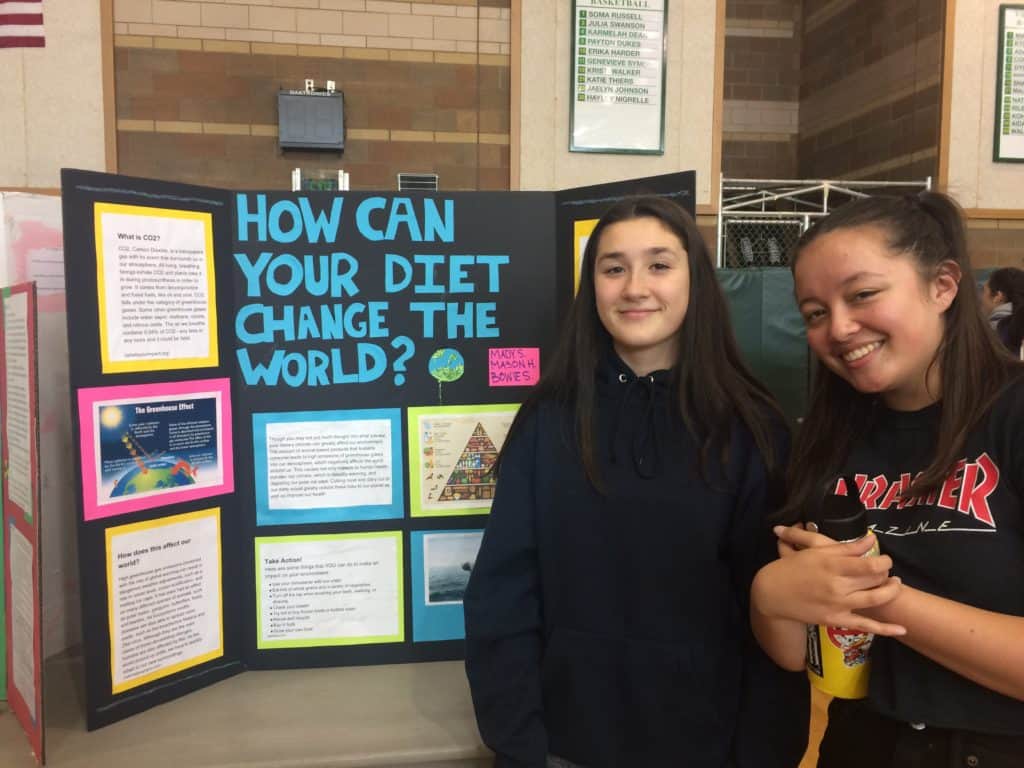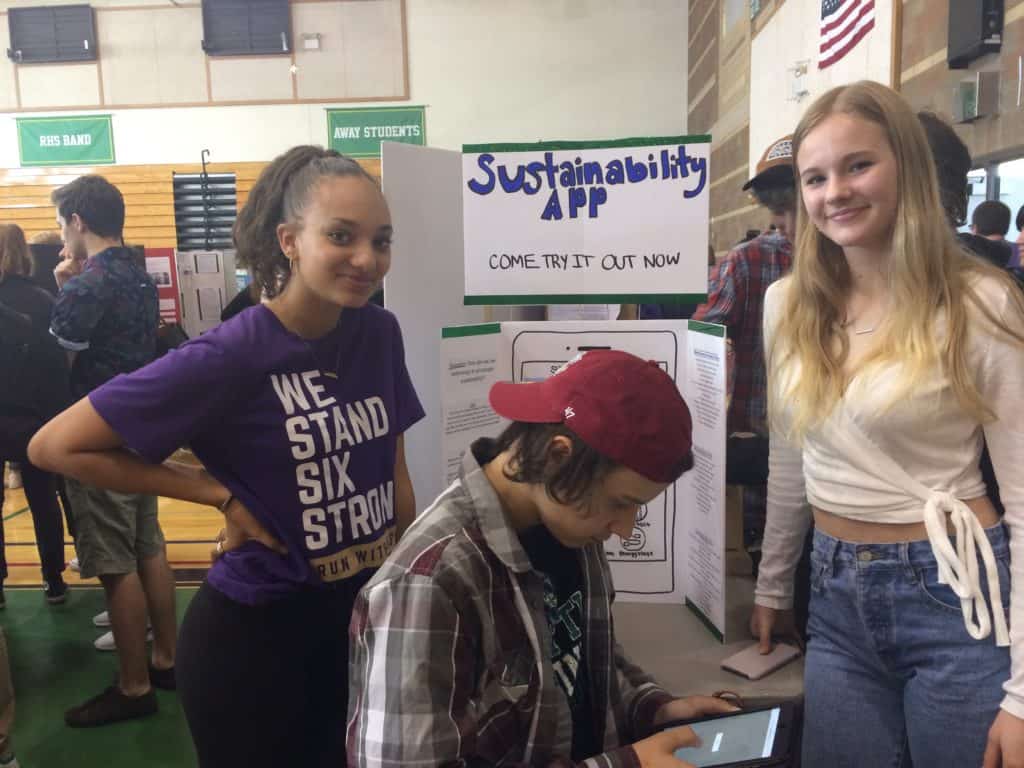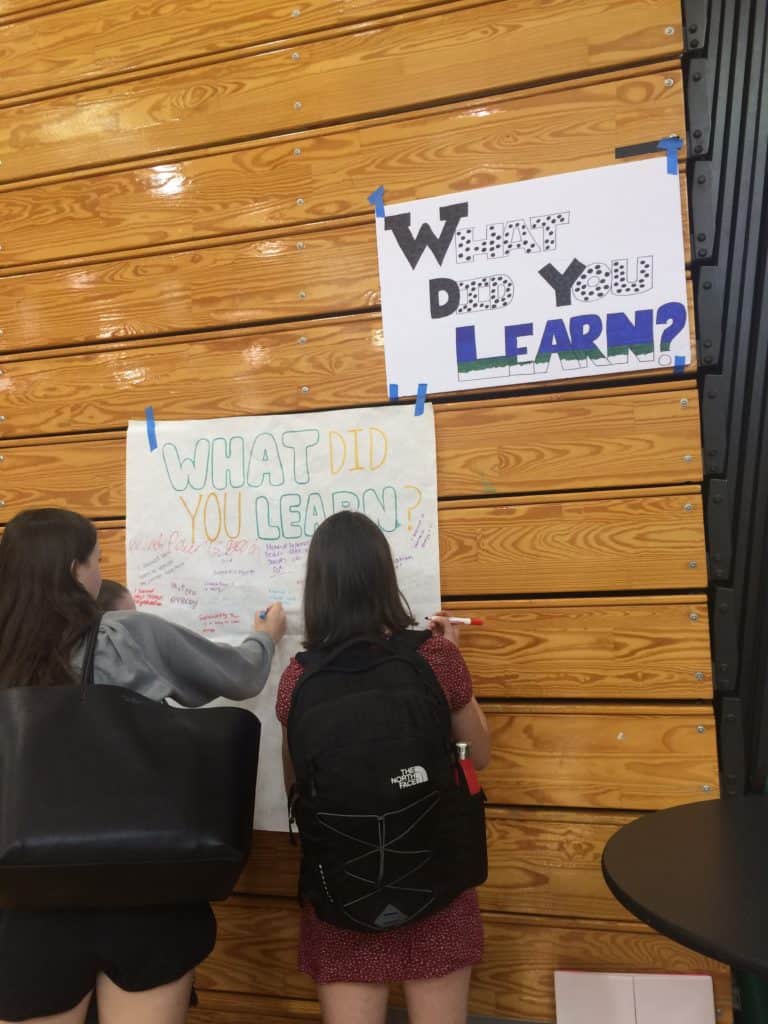The sustainability fair was back at Roosevelt this week bringing student projects ranging from homemade wind turbines to a Tesla in the back alley of the school. “The sustainability fair is research-based projects or experiments connected by students in biology classes.They find ways to be sustainable and present about it, and talk about it,” says sophomore and coordinator Mia Bell. The entire event is student organized with different coordinators and advertisers in each biology class making sure it runs as planned. Many students took a modern approach to sustainability by using common resources. Sophomores Elena Hart and Jayla Bowie “developed an app to take advantage of the technology at our hand, in the app there is water usage, transportation, and energy usage and it gives you a list of ways to live more sustainably.” Their app caught the attention of many students and teachers for its convenience and colorful display.

Other projects took a more physical approach so viewers could see sustainable living in action, “I built a tidal energy model and generator, it pumps water at 250 gallons per hour though water turbines hooked up to a magnet alternator,” explains sophomore Blake Harmon about his project which can charge everyday life conveniences, “When plugged in it creates ten watts of electricity at eleven and a half volts. You could power a car radio or charge most phones with its use.” For visitors wanting to step away from technology and engineering there were presentations based around simply watching what you eat, “If we were to cut down on meat and dairy intake there would be less greenhouse gas emissions,” says sophomore Bowie Spencer. Greenhouse gases occur naturally in the atmosphere, but the sustainability fair teaches when overproduced by human impact that they can cause serious damage, “they go with the rise of global warming which can harm the environment through ocean acidification and melting polar ice caps,” adds Spencer’s partner sophomore Madilyn Sauri.
 By doing the fair, students learn and teach not only to live more sustainability but how their personal actions affect the environment around them. Through a combination of their projects and class work the class of 2020 saved a total of 83,786 pounds of CO2 emissions. While the school year may be coming to close, it can be sure that these students are far from done with repairing and improving the world around them.
By doing the fair, students learn and teach not only to live more sustainability but how their personal actions affect the environment around them. Through a combination of their projects and class work the class of 2020 saved a total of 83,786 pounds of CO2 emissions. While the school year may be coming to close, it can be sure that these students are far from done with repairing and improving the world around them.

Photos and Article By: Natalie Delman
